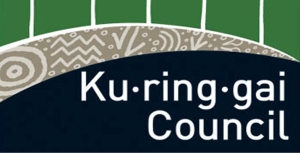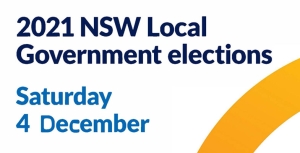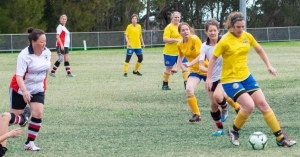Displaying items by tag: Kuringgai Council
Local council elections
Much has been written in the press about the stalemate that developed within Ku-ring-gai Council following the ‘election’ of a new mayor Cedric Spencer in September. There was a 50/50 split in the vote between him and his predecessor Jennifer Anderson, so the standard process is to draw a name out of a hat.
Soon after his election Cedric Spencer’s faction attempted to hold an Extraordinary Council Meeting to review the appointment of the general manager, John McKee, only three months before the election. The opposing faction refused to attend so there was not a quorum present. This situation continued as several more attempts were made to hold this meeting including adding the item to the agenda of the October ordinary meeting. The Minister for Local Government asked for an explanation of the situation but took no further action. As a result of the boycott of the ordinary meeting several council plans will not be progressed until February 2022.
After being postponed from 2020 the local government elections were finally held on 4 December. The outcome in Ku-ring-gai looks promising with several new faces with independent views.
The final results will not be declared until 20 December but it looks likely that STEP‘s new committee member, Greg Taylor, has been successful in the Comenarra Ward. Greg has a keen interest in bushland restoration and conservation and conducts school environmental education programs. Unfortunately he has decided to resign from the STEP committee to avoid conflicts of interest with issues where STEP has made submissions.
Survey of candidates in Hornsby and Ku-ring-gai
To help STEP members learn more about the environmental credentials of candidates in Hornsby and Ku-ring-gai we sent them a survey.
We contacted 49 candidates (all those who gave their email to the Electoral Commission) and we received ten responses (one from Hornsby and nine from Ku-ring-gai).
Responses
Click on the links below to see what the prospective councillors have to say, and click here to compare answers.
- Hornsby (Ward A) — Mick Marr (Group B)
- Ku-ring-gai (Comenarra) — Jayamala Gupte (Group D),
- Ku-ring-gai (Comenarra) — Trish Lynch (Group A),
- Ku-ring-gai (Comenarra) — Greg Taylor (Group F)
- Ku-ring-gai (Gordon) — Simon Lennon (Group B)
- Ku-ring-gai (Roseville) — Carmel Heffernan (Group D)
- Ku-ring-gai (Roseville) — Sam Ngai (Group B)
- Ku-ring-gai (Roseville) — Alec Taylor (Group A)
- Ku-ring-gai (St Ives) — Amanda Brien (Group D)
- Ku-ring-gai (Wahroonga) — Sheri Evans (Group F)
Questions we asked
- There are community concerns about urban heat, and the environmental and social impacts of the installation of synthetic turf on local ovals. What are your views on this?
- What’s your view on mountain bikers constructing their own new tracks through bushland?
- The NSW government wants to increase tree canopy cover in Greater Sydney from 16% to 40% by 2030. However, development as a result of population growth, subdivision, larger house footprints etc means that we continue to lose tree cover. Will you work to increase tree canopy?
- Do you support council’s environmental management policies, e.g. the biodiversity and water sensitive cities policies?
- Council does not have the financial resources to maintain effective firebreaks around all of the bushland boundaries of properties. Are you in favour of council developing a set of protocols so that qualified residents or their contractors are able to maintain their own boundaries?
- Some councils have resolved to dispose of surplus parcels of land behind closed doors. Will you undertake to make all such proposals transparent and invite community involvement?
- Some councils have not followed due process when asking for stakeholder feedback on a project. Would you take steps to ensure that all public consultation processes are carried out in an orderly and transparent manner?
- Do you think council should do more to encourage residents to reduce waste going into landfill?
- Council has resolved to reduce greenhouse gas emissions from its own operations and by the community to net zero by 2040 with an interim objective of a reduction of about 50% by 2030. Do you consider that enough action is being taken to achieve these goals?
- Is there anything you’d like to add?
Turramurra Turf Battle
Ku-ring-gai Council is soon to decide whether to install synthetic turf at Mimosa Oval in Turramurra.
Click here for our submission to council and here for our report on Mimosa Oval's geological and physical setting and flora.
STEP is opposed to the use of synthetic turf for a number of environmental reasons. These are accentuated by the location of Mimosa Park being surrounded by bushland, most of which is a biobanking site. These reasons include:
- During heavy rain additional water run-off is generated because the synthetic surface does not absorb water.
- Chemicals may leach from the synthetic turf and the breakdown of the plastics and rubber may pollute surrounding areas.
- Natural grass acts as a carbon sink but requires mowing and fertilizer use. On the other hand, synthetic turf is made from petrochemical materials, so the manufacturing process involves energy use.
- Synthetic turf requires ongoing cleaning and has a limited life so will need to be disposed of and replaced after 8 to 10 years depending on the level of use.
- Synthetic turf has a significantly higher surface temperature than natural grass making it impossible to use the field in hot weather, even only as high as 30°C.
- The synthetic turf surface will lead to compaction of the soil underneath and the loss of the microorganisms and insects that normally live in grassed areas.
- Natural grass fields provide a food source for birds such as magpies, lapwings and cockatoos. The reduction in foraging areas for these birds will have impacts further up the food chain. Top predators, such as the Powerful Owl, will lose a foraging opportunity.
Apart from the environmental issues the installation of synthetic turf at Mimosa is being opposed strongly by the local community that will lose use of the oval as a general recreation area. Its current use for cricket will not be possible. Kissing Point Cricket Club will have to find another venue for its matches. If natural grass is maintained soccer can still be played in the winter as well as cricket.
Mimosa Oval is part of Rofe Park that was gifted by the Rofe family:
Upon trust for the public as a public park and reserve for the preservation of natural fauna and flora.
The proposed use solely as a soccer field will mean it will no longer be a public park.
Council originally considered installing synthetic turf at Norman Griffiths Oval. From the soccer club’s point of view this has the major advantage that the field would be right next to their clubhouse. It appears that Norman Griffiths will still be used for soccer matches as there is a shortage of suitable fields.
Norman Griffiths Oval was rejected on the grounds of difficulty and expense of the works needed to control heavy rain run-off. The Mimosa plan will save about $1 million. Council now proposes to use the money saved to upgrade Norman Griffiths as well as installing the synthetic turf at Mimosa. It is not clear if the upgrade plan includes the installation of better fencing around the Norman Griffiths Oval to prevent people shimmying down the slopes around the oval. This work is essential in any case because these areas contain a special range of plants including orchids.
To cater for the cricketers who used to play at Mimosa Oval, council is proposing to install a concrete cricket pitch at Norman Griffiths. It is not clear what effect this will have on its use as a soccer field.














